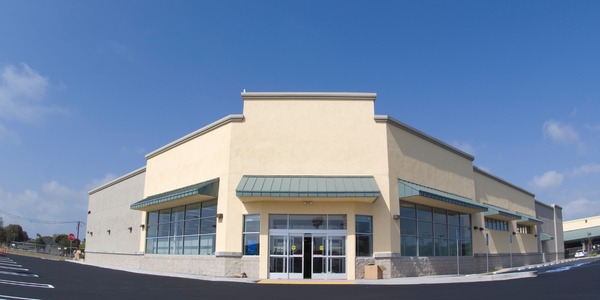Customer Company Size
Large Corporate
Region
- Europe
Country
- Germany
Product
- DocuWare
- Virtual ReScan software
- KV-S 6040 W Panasonic scanner
Tech Stack
- AS/400 system
- Barcode technology
Implementation Scale
- Enterprise-wide Deployment
Impact Metrics
- Cost Savings
- Customer Satisfaction
- Productivity Improvements
Technology Category
- Application Infrastructure & Middleware - Data Exchange & Integration
Applicable Industries
- Apparel
Applicable Functions
- Discrete Manufacturing
- Sales & Marketing
Use Cases
- Inventory Management
- Supply Chain Visibility
Services
- System Integration
- Data Science Services
About The Customer
FALKE is a clothing company that has been in operation since 1981. The company has been storing its documents digitally since 1997. The company generates a thousand outgoing invoices each day, in paper form alone enough to fill an entire file. They are printed from COLD data. In addition to this there are 50 customer documents a day, 2,000 ledgers a month, 70,000 accounts lists a year, as well as 50,000 incoming invoices, 20,000 internal documents, and 15,000 payment documents for credit transfers or checks each year. This comes to an annual total of half a million documents, with retention periods of up to 10 years. A total of 50 employees in financial accounting, controlling, sales and distribution, purchasing, and returns need access to the archived documents. This figure includes employees at subsidiary plants. Outgoing invoices are created on an AS/400 system, but each department works with its own special applications.
The Challenge
FALKE, a clothing company, had been storing its documents digitally since 1997 with the help of a service provider. However, this process was not efficient as documents were unavailable for a week and customer enquiries had to be stalled. Access to data was not user-friendly and was not possible from workstations. Copies were therefore often stored locally in departmental and workstation archives. FALKE was also looking for a system that could be expanded over time, allowing foreign sales companies to be connected in stages, enabling direct access to documents from the individual departments’ applications, and the introduction of a workflow to optimize document processing times. The company generates a thousand outgoing invoices each day, in paper form alone enough to fill an entire file. They are printed from COLD data. In addition to this there are 50 customer documents a day, 2,000 ledgers a month, 70,000 accounts lists a year, as well as 50,000 incoming invoices, 20,000 internal documents, and 15,000 payment documents for credit transfers or checks each year. This comes to an annual total of half a million documents, with retention periods of up to 10 years.
The Solution
FALKE implemented DocuWare to store its documents in-house. All documents are archived in the central DocuWare document pool, where they are available for immediate access directly from the workstations of authorized employees. The next step will involve providing access via the Internet to employees at subsidiary plants or field sales employees. Outgoing invoices from the main plant are archived automatically as soon as they are printed from the AS/400 system. The indexing information is read directly from the data stream. They can be archived as COLD files, saving a great deal of space. Outgoing invoices from subsidiary plants are converted to TIFFs using a special print driver and then archived automatically. Incoming invoices and other paper documents are given a barcode containing the document or customer number in encoded format. After scanning, the barcode can be used to transfer indexing data from other programs; for example posting the indexing data and all other main data from the accounting software to the incoming invoice. The DocuWare-certified Virtual ReScan software from Kofax guarantees the perfect legibility of the documents.
Operational Impact
Quantitative Benefit

Case Study missing?
Start adding your own!
Register with your work email and create a new case study profile for your business.
Related Case Studies.

Case Study
Fire Alarm System and Remote Monitoring Sytem
Fire alarm systems are essential in providing an early warning in the event of fire. They help to save lives and protect property whilst also fulfilling the needs of insurance companies and government departments.Fire alarm systems typically consist of several inter-linked components, such as smoke detectors, heat detector, carbon monoxide, manual call points, sounders, alarm and buzzer. The fire alarm system should give immediate information in order to prevent the fire spread and protect live and property.To get maximum protection a shoe manufacturer in Indonesia opted for a new fire alarm system to monitor 13 production sites spread over 160 hectars. Although the company had an existing fire alarm system, it could not be monitored remotely.It was essential that the new system would be able to be monitored from a central control room. It needed to be able to connect to the existing smoke detector and manual call point. Information should be easily collected and passed on to the Supervisory Control and Data Acquisition (SCADA) system. Furthermore, the system should have several features such as alarm management, auto reporting, being connected to many client computers without additional cost, and run 24/7 without fails. The company also needed a system which could be implemented without changing the architecture of the existing fire alarm system.

Case Study
IoT Applications and Upgrades in Textile Plant
At any given time, the textile company’s manufacturing facility has up to 2,000 textile carts in use. These carts are pushed from room to room, carrying materials or semi-finished products. Previously, a paper with a hand-written description was attached to each cart. This traditional method of processing made product tracking extremely difficult. Additionally, making sure that every cart of materials or semi-finished products went to its correct processing work station was also a problem. Therefore, the company desired an intelligent solution for tracking assets at their factories. They also wanted a solution that would help them collect process data so they could improve their manufacturing efficiency.

Case Study
Retailer Uses RFID Scanner to Improve Efficiency
Patrizia Pepe wished to improve the logistics of their warehouse: accepting incoming goods from their production sites, movement of items throughout
the warehouse, and packaging of goods for distribution to the retail locations. They initially tried to use barcodes for this function. Because barcodes must be individually scanned within a line-of-sight, the acceptance of goods coming into the warehouse was too time consuming. Working with the University of Florence, Patrizia Pepe instituted a five-month pilot project beginning in August of 2009 to test the validity of an RFID solution. The pilot involved tagging of about 60,000 items for the second seasonal collection, and convinced the company to move forward with tagging all items.

Case Study
Monitoring and Controlling Automatic Mixing and Dispensing Machines
As technology advances, textile manufacturing has been transformed from a labor-intensive to a partially or fully automated industry. Automation is significant in all segments of textile production - from spinning to printing, and textile machinery manufacturers are constantly searching for new technologies and automation processes will increase the productivity of their machines. The color paste mixing and dispensing machine is an essential part of the printing and dyeing process. With the advantage of automatically computerized controls and database management, the system can significantly improve its dispensing precision, working efficiency and production quality as well as reducing material consumption.









